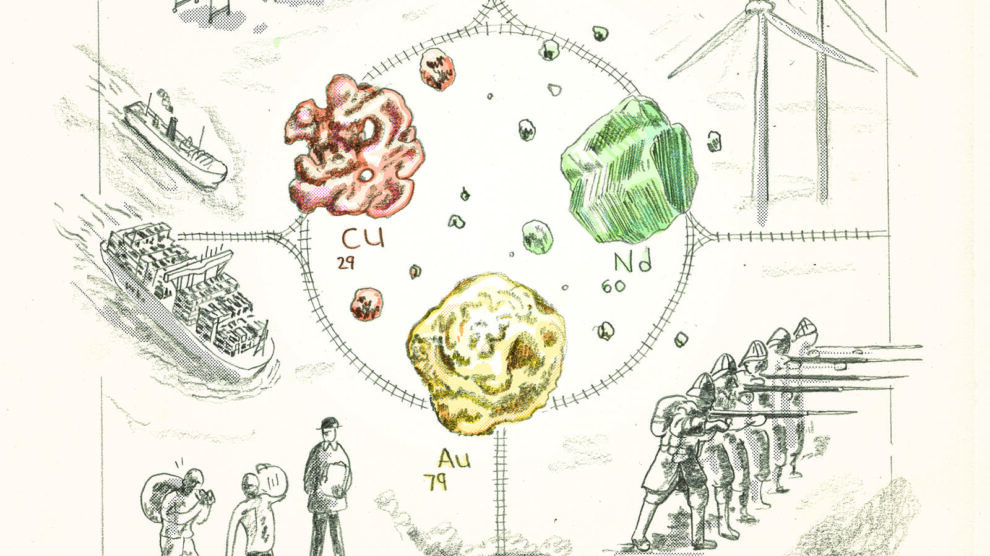Pubs, Bathtubs, and Labcoats
Review of The Radical Science Movement in the UK 1968-78: Struggles against the Impact of Capitalist Ideology on Science, Technology and the Social Relations of Science
By Becca Muir
Volume 22, number 2, Envisioning and Enacting the Science We Need

Where did the 1970s radical science movement begin? Some may say it started in a grand conference hall, where Nobel Prize winner Maurice Wilkins declared that science was in a state of crisis.1 Others say radical science began in a dusty old pub in Soho, London, where a group of particularly animated pub-goers could be overheard conducting seminars on science and politics called “science beneath the white labcoat.”2 However, let the record show that radical science also began in a bathtub. Godfrey Boyle, the founder of Undercurrents, said that the name for this underground “alternative science and technology” magazine came to him while he was taking a soak.3
It is clear that the origins of radical science are varied. Scientists from across disciplines united (and clashed) in the British Society for Social Responsibility (BSSR, pronounced “bzz-rus” by those in the know), the underground magazine Undercurrents, and the Radical Science Journal. These three modes of radical science, as Zac Bharucha calls them, were homes to the material and intellectual works of the movement, produced knowledge about radical science, and became the epicenters of radical organizing.
Why are these modes important to document? In this era, like today, radical science critiqued the applications of scientific knowledge, and was there to understand and challenge the power structures that affect us. Although there were often differences in priorities and ideologies, all those in the movement wanted to end the monovalence of capitalism and to create a better world. Figures described in Bharucha’s book range from philosophers to geneticists, nuclear physicists, and journalists. These people made up the fabric of science, and often contributed much toward their respective fields. They were interested in improving the world, but often grappled with how the values and aims of the institution of science differed from their own.
Looking at the syllabus for core courses in most undergraduate science programs in 2019, you won’t find prominent reference to this alternative way of seeing scientific “progress.” In fact, it’s unusual to find the political history of science as a core requirement for a Bachelor of Science degree, and, when the subject is taught, it is often a parochial account. Bharucha criticizes those sanitized versions of science history that make their way into popular discussions of science. In his view, the radical components of scientific advances have been neglected, reinforcing the toxic narrative that science is neutral, objective, and apolitical.
The book has two challenges: providing a factual, multifaceted, and fine-grained account of the main players and events of the movement, while also placing the significance of radical science in the wider political context of the time. It is no easy task to collect and synthesize this information when radical science has been largely ignored by historians of science, and practically erased by the institutions of science. Amongst other material, Bharucha uses interviews, photographs, booklets, and speeches to create a picture of radical science in this time period.
Bharucha also attends to this task by structuring the book like a thesis. It is a dense book that is made more readable by having a chapter dedicated to terminology. The first few chapters are concerned with the philosophy and practice of science, drawing upon classic theorists, such as Thomas Kuhn, and other more contemporary yet iconic thinkers in the movement, such as sociologist Hilary Rose and philosopher Marx Wartofsky. Bharucha also discusses the ideological differences between active participants in radical science at the time. However, he is more successful when focused on conveying the uniting principles.
In these initial chapters, Bharucha asks questions such as: How has capitalism distorted the practice of science, and how do we produce and transmit scientific knowledge? How can we move beyond absolute scientism but still recognize the value of the knowledge that science produces? He also introduces concepts such as the critique of the capitalist idea of progress (“progress for whom?”) ever relevant to our current situation, where genomic companies and silicon valley are currently at the helm of technological progress. After this, historical accounts of the three modes are provided.
However, the book could have done with more personal stories. Radical science at the time was so special because it used the skills of scientists and specialists to aid the anti-establishment actions of people in the community. For example, Alice Bell’s account of the grassroots activism the BSSR did alongside local residents to fight air pollution in Battersea, London, is particularly inspiring to read. Scientists helped residents collect data, which pressured the local council to take action.4Additionally, Bharucha mentions Jim Shapiro, a geneticist who quit science for politics because he believed that his work isolating the first gene could be “put to evil uses by the men who control science.”5 Did he ever change his mind?
Additionally, as a graduate student in the UK, I have to ask: what happened to the British Society for Social Responsibility in Science? And what led to the collapse of Undercurrents, a magazine that managed to unnerve the mainstream media and radically shift perceptions about how catastrophic and easy it would be to create “unauthorized” nuclear weapons?
In Bharucha’s words, the movement faded with a yawn. But it seemed pretty exciting to me. A shortcoming of this book is the lack of focus on the decline, as surely it would be useful to know the reasons for the decline in order to avoid it again.
In the final chapter, Bharucha writes that the critiques of radical science teach us “that it is difficult to see the ideology when we are swimming in it.” If we are swimming in ideology, we are also currently drowning in its consequences. In a time when we need them more than ever, left-wing organizational structures in science are largely missing.
We live in a world in which climate change deniers, anti-choice groups, and other right-wing figures dictate the cultural hegemony. Frustratingly, some of the greatest challenges of our time are the result of scientific, medical, and technological progress. For instance, industrialization contributes towards carbon emissions, genetic science leads to deep ethical quandaries, and cutting-edge healthcare is expensive, which leads to struggles over its availability. Climate change, genomics, and healthcare are intrinsically political, and their regulation is hotly debated in our legislative chambers and boardrooms. However, we want a science free from political prejudice and vested business interests. This is the time to read up on past radical science struggles and learn lessons about how to change the world. This book is a good place to start.
The Radical Science Movement in the UK 1968-78: Struggles Against the Impact of Capitalist Ideology on Science, Technology and the Social Relations of Science
Zac Bharucha
CreateSpace
2018
216 Pages
About the Author
Becca Muir is a PhD student at University College London, where she researches the genetic and social determinants of psychosis. She is also interested in social science and has an MSc in Cognitive Anthropology from the University of Oxford. Outside of academia, Becca has interests in social activism and student welfare.
References
- Fuller Watson, “Introduction” in Maurice Wilkins, The Social Impact of Modern Biology (New York: Routledge, 2014), p. 5.
- Alice Bell, “Beneath the white coat: the radical science movement,” The Guardian, July 18, 2013.
- Godfrey Boyle, “How It All Got Started (From UC50),” Archive of Undercurrents, the magazine of radical science and alternative technology, 1972 – 1984, July 31, 2019.
- Alice Bell, “How Radical 70s Scientists Tried to Change the World,” Gizmodo, January 27, 2015.
- James K. Glassman, “Harvard Genetics Researcher Quits Science For Politics,” Science 167 (February 13, 1970): 963.





